This Is the Army

Brief Synopsis
Cast & Crew
Michael Curtiz
George Murphy
Joan Leslie
George Tobias
Alan Hale
Charles Butterworth
Film Details
Technical Specs

Synopsis
In New York, in 1917, actor and dancer Jerry Jones is drafted, and before he leaves, he marries his partner Ethel. Encouraged by army officials, Jerry puts together a musical show to boost morale. Jerry's show, Yip Yip Yaphank , has an all-soldier cast and is very popular, but it ends when the men are sent to the front. After the soldiers sing the closing song, they march off-stage and through the auditorium to the transport that will take them to France. During the fighting, Jerry's leg is wounded, but he is well enough to celebrate with his buddies after the Armistice. His joy is complete when he learns that he is the father of a son. Unable to continue dancing because of his injury, Jerry opens up a theatrical agency, and in 1941, he is joined by his son Johnny. Johnny is in love with Eileen Dibble, the daughter of Jerry's old army buddy, Eddie. After the Japanese bomb Pearl Harbor, Johnny enlists in the Army. Eileen wants to get married immediately, but Johnny, who has recently visited the family of a soldier killed at Pearl Harbor, believes that it would be wrong to marry in the face of an insecure future. Many of the World War I veterans, including Jerry, Eddie and Maxie Twardofsky visit the boot camp, where they find that their old instructor, Sergeant McGee, is still training soldiers. The older men decide to put on another show, This Is the Army , to raise money for the Army Relief Fund. The show is extremely popular and goes on tour, ending in Washington, D.C., where President Franklin D. Roosevelt attends. Eileen, who has joined the Red Cross, visits Johnny backstage and finally convinces him that she understands the risks of marrying a soldier, but wants to make a commitment to him before he leaves for war. On stage, the former stars of Yip Yip Yaphank do a number and are joined by Jerry, who dances with them despite his injured leg. Backstage, Eileen returns with a chaplain and marries Johnny. At the end of the show, the men march off to the front as their fathers did before them.

Director

Michael Curtiz
Cast

George Murphy
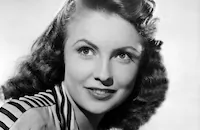
Joan Leslie

George Tobias

Alan Hale

Charles Butterworth

Dolores Costello

Una Merkel

Stanley Ridges

Rosemary Decamp
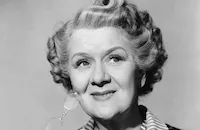
Ruth Donnelly

Dorothy Peterson

Frances Langford

Gertrude Niesen
Kate Smith
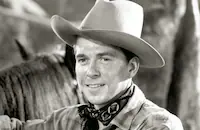
Lt. Ronald Reagan
Sgt. Joe Louis
1st Sgt. Alan Anderson
M/sgt. Ezra Stone

T/sgt. Tom D'andrea
S/sgt. James Burrell

Sgt. Ross Elliott
Sgt. Alan Manson
Sgt. John Prince Mendes
Sgt. Julie Oshins
Sgt. Earl Oxford
Sgt. Robert Shanley
Sgt. Philip Truex
Cpl. James Maccoll

Cpl. Herbert Anderson
Cpl. Ralph Magelssen
Cpl. Tileston Perry
Pfc. Joe Cook Jr.
Pfc. Larry Weeks
The Allon Trio

Irving Berlin
Sgt. Fisher
Jackie Brown
Patsy Moran
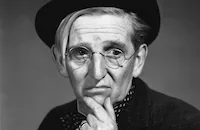
James Conlin
Ilka Gruning
Doodles Weaver
Murray Alper

Sgt. Gene Berg
S/sgt. Arthur Steiner
Sgt. Belmonte Christiani
Cpl. Pinkie Mitchell
James Cross
William Wyckoff
Sgt. Fred Kelly
Pfc. Hank Henry
Bill Kennedy

Irving Bacon
Leah Baird

Pierre Watkin
Harry Mckim
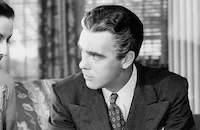
Warner Anderson
Jack Young

Victor Moore

Ernest Truex
John L. Murphy
Robert J. Mcdonald
Robert Adams
Peter O'neill
Jack Dillon
Bert Spencer
Lee Harmon
Alexis Sousloff
Jack Riano
Peter L. Burns
Allen Pomeroy
John Daheim
Gayle Decamp
Ross Ford
John James
Jimmy Butler
Frank Coghlan Jr.
Richard Crane
Arthur Space
Byron Shores
Arthur Foster
Crew
Al Alleborn
George Amy
John Beckman
Irving Berlin
Capt. Claude Binyon
Sgt. Eddie Blatt
Percy D. Burt
Stuart Churchill
Benny Cohan
Owen Crompton
Hugh Cummings
Julius J. Epstein
Philip G. Epstein
Gloria Fayth
Leo F. Forbstein
Bert Glennon
Ward Hamilton
Frank Heath
Ray Heindorf
George James Hopkins
John Hughes
Claude Hutchinson
Natalie Kalmus
Lt. John Koenig
James Leicester
John Lucas
Lt. Col. Frank T. Mccabe
Fred Morgan
Richard Mueller
George Nogle
Pvt. Orry-kelly
Herbert Plews
Sol Polito
Leroy Prinz
C. A. Riggs
Leon Robicheau
Casey Robinson
Fred Scheld
Cameron Shipp
M/sgt. Robert Sidney
Don Siegel
Jack Sullivan
Jack L. Warner
Perc Westmore

Videos
Movie Clip






Trailer
Film Details
Technical Specs

Award Wins
Best Score
Award Nominations
Best Art Direction
Best Sound
Articles
This Is the Army - This is the Army
This Is the Army began as a 1942 Broadway musical, but its origins reach back much further. When the United States entered World War II, Irving Berlin decided to mount an updated version of his World War I stage hit Yip Yip Yaphank, an all-soldier revue that had elevated public morale in its own time. For This Is the Army, Berlin basically followed his own model, updating it with new songs and a reworked plot. Like Yip Yip Yaphank, the new production concerned a Broadway producer putting on a variety show enacted by soldiers who march off to war at the show's conclusion.
This Is the Army, which opened on Broadway on July 4, 1942, employed a cast of over 300 actual soldiers who formed a real Army unit, and all ticket sales were donated to Army Emergency Relief, an organization established by the Secretary of War to aid soldiers and their dependents. It proved so successful on Broadway that a national road show was quickly organized. Little did Berlin realize that This Is the Army was about to take up three full years of his life.
The road show began in Washington, DC, and traveled west, ending in Los Angeles. By that time, Berlin had sold the movie rights to Jack Warner for $250,000, with that money, too, going to Army Emergency Relief. The soldier cast set up a military barracks near the Burbank studio, and they marched to work in formation every morning at 6 a.m. Strict military discipline was enforced at all times; the men were not allowed to interact with actresses, for instance, and when they weren't filming, they performed military drills, ran obstacle courses, practiced target shooting and the like. They earned standard military pay of $250 per month. On set, director Michael Curtiz would issue orders to his assistant directors, and they in turn would relay them to non-commissioned officers who would bark orders at the soldiers.
Joining the military cast were stars George Murphy and Ronald Reagan, both of whom had big futures in American politics. At this time, Reagan was an Army lieutenant, and he was specifically ordered to return to Hollywood to appear in this film, which he enjoyed greatly. The two stars play father and son in a story that links Berlin's two stage shows: Murphy is the Broadway-performer father who originally puts on Yip Yip Yaphank before marching off to WWI, and years later his son Reagan, another performer, works with his father to put on This Is the Army before marching off to WWII. Joan Leslie is on hand as Reagan's love interest.
Appearing as themselves in the picture are singers Frances Langford and Kate Smith, boxer Joe Louis, and Irving Berlin himself, who sings a song he composed for Yip Yip Yaphank entitled "Oh, How I Hate to Get Up in the Morning." Berlin also sang this song in the stage version of This Is the Army. Kate Smith performs "God Bless America," her signature song, which Berlin originally wrote in 1918 but which only made its public debut in 1938 on Kate Smith's radio program. For the movie, Smith recreates her famous introduction to the song.
Also in the cast is actress Dolores Costello, who had been a major silent movie star and had appeared one year earlier in The Magnificent Ambersons (1942). This Is the Army was her final film. She took an early retirement after this due to a deteriorating skin condition caused by years of harsh studio makeup.
For the film's final number, "This Time Is the Last Time," Warner Brothers constructed its largest stage ever. Two hundred arclights were required to light it, three times more than had ever been used previously. The sequence took three weeks to rehearse and five days to shoot, with an enormous number of men choreographed at once on the set. One section of the song's lyrics had to be changed by Berlin after some public outrage. Originally the lyrics went: "Dressed up to kill/We're dressed up to kill/Dressed up for victory/Oh, we don't like killing/But we won't stop killing/Till the world is free." A string of public attacks from religious groups decrying the bloodthirstiness of these lines prompted Jack Warner and Irving Berlin to bow to pressure and change the words. Berlin changed "kill" to "win" and adjusted the middle lines to: "We are just beginning/And we won't stop winning."
This Is the Army was in production three months, ending in May 1943, and the movie was then rushed through post-production to open that August. Its reception was enormous. Critics praised the film, with The New York Times calling it "rousing, buoyant, captivating, as American as hot dogs or the Bill of Rights... A warmly reassuring document on the state of the nation... From beginning to end, a great show." Audiences ate it up, and the movie and stage show combined to bring in nearly $10 million for Army Emergency Relief. (Warner Brothers was allowed to recoup its cost.) In fact, This Is the Army became by far the highest-grossing movie of the year and was even honored with three Oscar® nominations, winning for Best Score. (The other nominations were for Best Sound and Best Art Direction.)
The movie was not the end of the show, however. After production, the Army again took the stage show on the road, touring England and then the battlefronts of North Africa, Italy, the Middle East, and the Pacific Theater, with stops in New Guinea, the Philippines, Okinawa and Iwo Jima. The final stop was Hawaii, and the final performance was on Maui on October 22, 1945. Berlin accompanied the show on this world tour, continuing to sing his song on stage at every performance. In the end, This Is the Army was seen by some 2.5 million soldiers.
Producers: Hal B. Wallis, Jack L. Warner
Director: Michael Curtiz
Screenplay: Capt. Claude Binyon, Casey Robinson; Irving Berlin (play, uncredited)
Cinematography: Bert Glennon, Sol Polito
Art Direction: John Hughes, John Koenig
Music: Ray Heindorf, Max Steiner (both uncredited)
Film Editing: George Amy
Cast: George Murphy (Jerry Jones), Joan Leslie (Eileen Dibble), George Tobias (Maxie Twardofsky), Alan Hale (Sgt. McGee), Charles Butterworth (Eddie Dibble), Dolores Costello (Mrs. Davidson), Una Merkel (Rose Dibble), Stanley Ridges (Maj. John B. Davidson), Rosemary DeCamp (Ethel), Ruth Donnelly (Mrs. O'Brien), Dorothy Peterson (Mrs. Nelson), Frances Langford (Frances Langford).
C-121m.
By Jeremy Arnold

This Is the Army - This is the Army
Ronald Reagan, 1911-2004 - TCM Remembers Ronald Reagan
Ronald Reagan, the actor turned elected official whose fascinating career saw him develop as a contract player for Warner Brothers studios, to a politician who fulfilled his ambitions by becoming the 40th President of the United States, died at his home in Los Angeles on June 5 after a long battle with Alzheimer's disease. He was 93.
He was born Ronald Wilson Reagan on February 6, 1911 in Tampico, Illinois to John and Nelle Reagan. When Reagan was nine, his family settled down in the small community of Dixon, about 100 miles west of Chicago. After high school, Reagan enrolled in Eureka College, a small Christian school near Peoria. He graduated in 1932 with a degree in Economics, and pursued a career in broadcasting. His first gig was as a part-time announcer at WOC in Davenport, Iowa. Within a year, WOC had merged with its big-sister station, WHO in Des Moines, and Reagan was hired as a sports announcer.
In the spring of 1937, Reagan drove to Southern California to catch the Chicago Cubs in spring training on Santa Catalina Island. While he was in California, he wrangled a screen test and signed a contract for $200 a week with Warner Brothers. His film debut was rather inauspicious; he portrayed a radio announcer in an innocuous comedy Love is on the Air (1937). He made a few more "B" programmers like Hollywood Hotel (also 1937), and Girls on Probation (1938), before getting his first prominent role opposite Bette Davis in the popular tearjerker, Dark Victory (1939).
Although he seldom got credit for being a good actor, there was no denying that Reagan held his own given the right material: Knute Rockne, All American as the doomed Notre Dame football hero George "The Gipper" Gipp, where he delivered the film's immortal line "Win one for the Gipper!"; Santa Fe Trail in which he ably supports Errol Flynn in one of the boxoffice hits of its era (both 1940); Kings Row (1941), featuring one of his finest performances as a small-town playboy whose legs are amputated by a careless surgeon; and Desperate Journey (1942) where he again supported Flynn in an exciting action picture.
Due to his poor eyesight, Reagan didn't see any action in World War II, so the studio heads assigned him to star in a series of patriotic films produced by the First Motion Picture Unit of the Army Air Forces in Culver City. Between 1942-45, Reagan starred in over 400 of these films. After the war, Reagan still found some good roles: The Voice of the Turtle (1947) proved he had a deft hand at light comedy opposite Eleanor Parker; The Hasty Heart (1949) offered another underrated performance as he ably portrayed the Yank in John Patrick's much heralded wartime play; and Storm Warning (1950) was a slick melodrama that cast Reagan as a crusading District Attorney determined to bring the KKK in a small southern town, with the help of Doris Day and Ginger Rogers!
It was around this time that Reagan became involved in politics. In 1947, he began a five-year term as president of the Screen Actors Guild (SAG), and testified in October of that year before the newly formed House Un-American Activities Committee (HUAC). He identified suspected Communists Larry Parks, Howard Da Silva and Alexander Knox, all of whom were subsequently called to testify, and subsequently blacklisted. Later records showed Reagan was so concerned about the Communist influence in Hollywood, that he became an FBI informer.
As Reagan became steeped in his political career, his parts throughout the '50s became inferior: the notorious Bedtime for Bonzo (1951); the coy "sex" comedy She's Working Her Way Through College (1952) that cast him as a college professor who romances a stripper! (Virginia Mayo); Cattle Queen of Montana (1955), a sluggish Western that even the redoubtable Barbara Stanwyck couldn't save; and finally Hellcats of the Navy (1957), a stodgy war picture that would be his only film that co-starred his wife Nancy (Davis).
Television offered some salvation. For eight years, (1954-62), Reagan served as the host of General Electric Theater, a televised series of dramas. He also found a niche as GE's goodwill ambassador to employees and to civic and business groups around the country, furthering his taste and honing his craft as a public official. By the mid '60s, Reagan would move into politics entirely, save for one last film, the thrilling The Killers (1964), Reagan's only known villainous role, as a murderous gangster. That same year, he actively campaigned for Republican Presidential candidate Barry Goldwater, although Goldwater lost to Lyndon B. Johnson.
Reagan whose profile was riding high, had cemented his future as a successful politician. In 1966, he ran against incumbent Governor Pat Brown for the state of California and won, serving successfully for two terms until 1974.
Reagan began an all-out, two-year drive to wrest the 1976 nomination from incumbent Gerald R. Ford, an appointed vice president who became president on the resignation of Nixon. Reagan fell short by a handful of delegates to the Republican national convention. But Ford lost to Jimmy Carter, and Reagan became the front-runner to challenge Carter in 1980. After defeating Carter, Reagan held two terms as President of the United States (1981-89). After his second term was over, he retired quietly in California. In 1994, it was revealed to the media that Reagan was suffering from Alzheimer's disease; he had been kept out of the public eye since then.
He was married briefly to actress Jane Wyman (1940-48), and had two children; a daughter Maureen and an adopted son, Michael. In 1952, he married a budding film starlet, Nancy Davis, who bore him two more children; a daughter, Patty; and a son, Ronald Jr. Ronald Reagan is survived by Nancy, Michael, Patty and Ron Jr. His daughter Maureen died of Melanoma in 2001 at the age of 60.
by Michael T. Toole
Ronald Reagan, 1911-2004 - TCM Remembers Ronald Reagan
Quotes
Will you marry me tonight?- Jerry Jones
Well, of course.- Ethel
Wonderful. Congratulations, darling, you're a warbride. I've just been drafted.- Jerry Jones
Trivia
Notes
The title card reads "Irving Berlin's This Is The Army." Although the opening credits include a copyright statement, the film is not listed in the Catalog of Copyright Entries. The film opens with the following written statement: "We wish to thank Mr. Irving Berlin for making this motion picture possible through his two soldier shows: Yip, Yip, Yaphank-1918; This Is the Army-1943. This picture is being distributed for the benefit of the United States Army Emergency Relief Fund." A May 21, 1942 Hollywood Reporter news item reported that Paramount was negotiating for the film rights to Irving Berlin's play. The July 18, 1942 issue of Pacific Coast Musician states that Warner Bros. bought the stage rights for $250,000. In the October 17, 1942 issue of Collier's, an article relates that the stage show raised about five million dollars for the Army Emergency Relief Fund. The stage production opened its tour in Washington, D.C. on September 29, 1942 and finished the tour in Los Angeles, where many members of the production joined the cast of the film. Collier's reported that even while rehearsing and performing, the company did two hours of military drills daily. An July 8, 1942 Hollywood Reporter news item notes that all the actors were in some branch of the Army. Although this was not strictly true, all the uniformed men who appeared were members of the armed forces. Irving Berlin performed his song "Oh, How I Hate to Get up in the Morning" in the film.
According to information in the Warner Bros. Collection at the USC Cinema-Television Library, Dinah Shore was asked to sing the song "What Does He Look Like?" but declined the offer, stating that in her opinion, the lyrics were more appropriate for a male singer. In the film, the song is sung by Frances Langford. Fred Astaire, Joseph Cotten and Walter Huston were all considered for the role of "Jerry," and George Brent was offered the role of "Col. Davidson," but refused to work for no salary. Ginger Rogers was considered for the role of "Eileen." Hollywood Reporter news items add the following information about the production: Jack Warner, Hal Wallis, Michael Curtiz and Casey Robinson all donated their salaries to the Army Emergency Relief Fund. The songs "The Girl He Left Behind," "My Sweetie" and "Dressed Up to Kill" were composed especially for the film. Some scenes were shot on location at Camp Cooke in central California. The World War I battle scenes were filmed at the Warner Ranch in Calabasas, CA. Five hundred men were used in the final number "This Will Be the Last Time."
According to the Hollywood Reporter review, the top ticket price at the New York City premiere was $55. All of the film's profits were donated to the Army Emergency Relief Fund. The film cost $1,400,000 to produce. A December 15, 1954 Hollywood Reporter news item notes that the original negative of the film was turned over permanently to This Is the Army, Inc., on behalf of the Army Emergency Relief Fund. Fred Kelly was Gene Kelly's brother. The film was named one of the Film Daily Ten Best Pictures of 1943. According to modern sources, This Is the Army is one of the highest grossing musical films of all time. Ray Heindorf won an Academy Award for his musical score. The film was also nominated for Best Art Direction-Interior Decoration in a color film and for Best Sound Recording. Two hundred unbilled soldiers and a chorus of professional singers performed in a Lux Radio Theatre broadcast of the story on February 22, 1943.

Miscellaneous Notes
Released in United States 1943
Released in United States 1943














